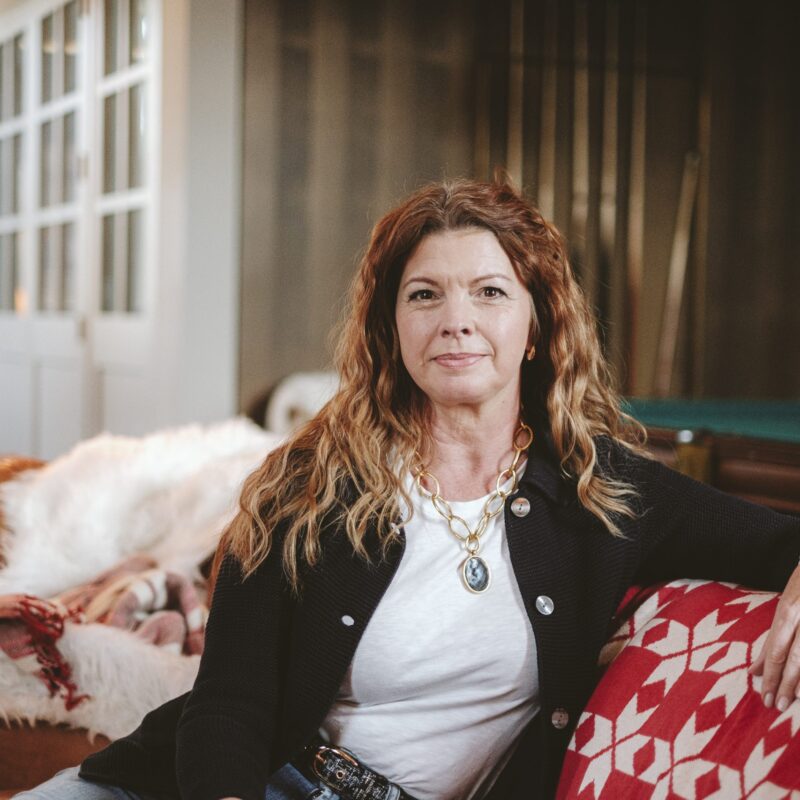Lugs? Check. Needle-nose grape shears? Check. Decent weather. Finally, yes, check.
|
Gabriele Rausse, revered as the godfather of Virginia wine, has worked well over 30 harvests since he first came to the state from his native Italy to plant the vines at Barboursville Vineyards. Recent rainfall, coming as it did when the grapes were at their peak, complicates the 2009 harvesting schedule. |
It’s a Wednesday afternoon and I’m standing among rows of grapevines near Lake Albemarle with Gabriele Rausse, a much-sought-after consultant to local winegrowers and the man who played a central hand in getting the whole Virginia wine industry going more than 30 years ago. That very day, Rausse’s Refosco, a red varietal well known in the Friuli region of northern Italy but relatively rare in this state, earned compliments from the Washington Post’s wine critic. But time didn’t permit too much savoring of that news. There’d been a lot of rain the previous weekend and this vintage’s grapes were in real jeopardy of developing sour rot, which, as the name suggests, is not a condition that winemakers welcome. And so, we were cleaning.
An acre and a half of vines stretched ahead of us. At the rate we were going—about a dozen vines an hour—it was going to be a long afternoon or four. What was taking so long? For one thing, the regular harvest crew, under the direction of Rausse’s son Tim, had not arrived yet (they were still working on the other side of Albemarle County). That left plenty of time for shooting the breeze—and there are few conversationalists in the Virginia wine industry as enthusiastic as Rausse. But more significantly, we were examining each cluster of grapes as we cut it from the vine, looking for signs of rot and then snipping the bad berries out before dropping the cluster into a yellow, plastic lug. It’s painstaking work. Still, Cab Franc grows in loose clusters that are comparatively easy to poke around in. A tightly clustered varietal like Pinot Noir, were it to require the same attention due to factors like weather, might take twice as much time!
Like many area winemakers, Rausse has several sources for his grapes. Even wineries that have vines planted on the property are likely to buy grapes from other sources. Sometimes they buy from each other (in fact, the harvest that Tim Rausse was directing elsewhere that afternoon was at a Greenwood vineyard for the benefit of Blenheim Vineyards). In the case of Knight’s Gambit, where we were, Rausse and owner Paul Summers have a handshake deal, which, both men suggest, is growing rare in the industry.
But we digress.
A ton of grapes (and that’s about what an acre and a half will yield) will produce about 600 liters of wine, give or take, or close to 70 cases. Even this simple math should make the point, in case you doubted it, that wine is an exceptionally labor-intensive agricultural product.
Reluctantly, I had to get back to my desk, so after three hours I left Rausse though the crew had still to arrive. But I checked in later as to the fate of all that Cab Franc. The bulk was picked the following day. And then that night, at 11pm, the process of crushing back at the winery commenced. At 1:47 the following morning, word came via e-mail: “…we are done.”
This week, the process begins anew with the last of Rausse’s Lake Albemarle grapes, the Petit Verdot.
•
Achtung, wine lovers! October is Virginia Wine Month, as declared by the state marketing people. Festivals and tastings continue throughout the month. Find complete listings for the state at www.virginia.org.
New on shelves this month from The History Press, A History of Virginia Wines, is a slim, dishy tome that might make a decent read-aloud companion piece while you tour the state’s wineries.






